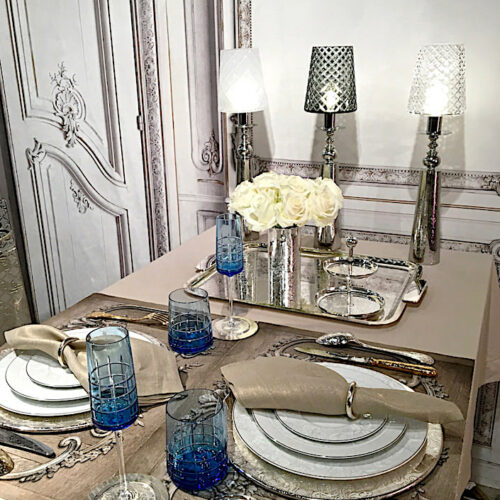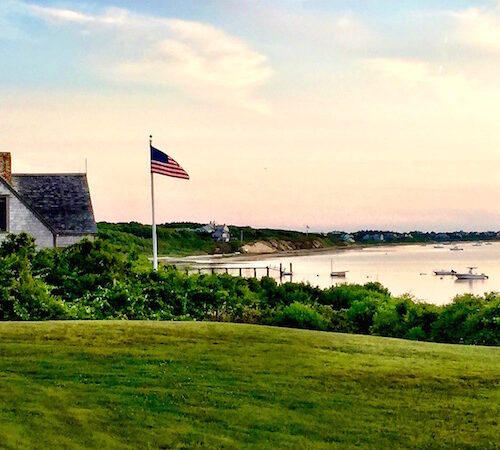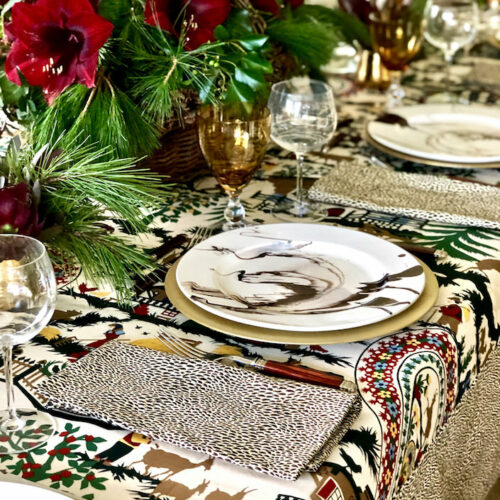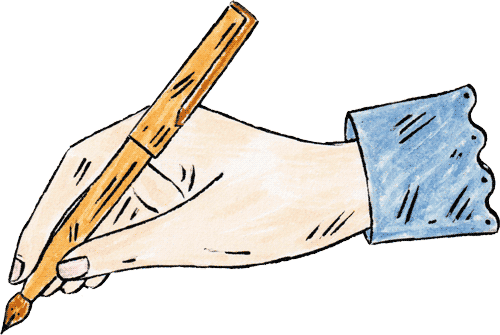As tomorrow is (shockingly) the last day of December, the time has come for the Quintessential Guide to Champagne 2018 edition. In my book, any time is ripe for champagne, but New Year’s Eve in particular inevitably beckons some bubbly. And while I encourage all to imbibe responsibly, perhaps F. Scott Fitzgerald got it right when he said, “Too much of anything is bad, but too much champagne is just right.”
 Clearly Dali and Bardot got the message! And while the elegant Ingrid Bergman and Cary Grant may have used champagne to calm their nerves in Notorious,
Clearly Dali and Bardot got the message! And while the elegant Ingrid Bergman and Cary Grant may have used champagne to calm their nerves in Notorious,
 Betty Davis knew “There comes a time in every woman’s life when the only thing that helps is a glass of champagne.”
Betty Davis knew “There comes a time in every woman’s life when the only thing that helps is a glass of champagne.”

So whether you’re planning a celebratory night on the town, like Bette Davis and crew at the legendary Stork Club in All About Eve, or in with family, below ;-) , hopefully champagne will be a part of your New Year’s Eve.

If you’ve ever wondered the how and why of champagne, read on and if you’ve visited this discussion in the past, you can hop to the end for some drinking suggestions with several new additions for this year. Champagne has been a celebratory drink for centuries, enjoyed and depicted in paintings as early as 1734 in Jean-François de Troy’s Le Déjeuner d’Huîtres (lunch of oysters), below, one of two paintings commissioned for King Louis XV’s dining room at Versailles.

Centuries later, another world leader, Winston Churchill, frequently professed his love for champagne, oft repeating Napoleon’s quote “I could not live without Champagne. In victory I deserve it. In defeat I need it.” It was claimed that between 1908 and 1945, he had 42,000 bottles of the bubbly elixir opened for him.
 His favorite label was Pol-Roger (deliveries to 10 Downing Street below) and during a lunch celebrating the liberation of France in 1945, he developed a lifelong friendship with Odette Pol-Roger.
His favorite label was Pol-Roger (deliveries to 10 Downing Street below) and during a lunch celebrating the liberation of France in 1945, he developed a lifelong friendship with Odette Pol-Roger.
 After his death in 1965, she had all Pol Roger labels destined for the United Kingdom bordered in black in tribute to him. Their prestige champagne today is in fact the Cuvée Sir Winston Churchill, bearing his portrait on the bottle.
After his death in 1965, she had all Pol Roger labels destined for the United Kingdom bordered in black in tribute to him. Their prestige champagne today is in fact the Cuvée Sir Winston Churchill, bearing his portrait on the bottle.

As you may know, in order to be called Champagne the wine must be produced within the boundaries of the Champagne Region in France. This Region was delineated many generations ago and must be adhered to with strict regulations. Therefore, when you look at the prices of Champagne and wonder why they are so high, you must realize all the many factors that go into the making of that final bottle.

 The history of champagne goes back about 300 years thanks to that famous monk, immortalized at Moët & Chandon in Epernay, above, who discovered by accident the wonders of extra wine fermentation producing those lovely bubbles. The key process in producing Champagne is that SECOND fermentation which occurs in a sealed bottle. The entire process is described below.
The history of champagne goes back about 300 years thanks to that famous monk, immortalized at Moët & Chandon in Epernay, above, who discovered by accident the wonders of extra wine fermentation producing those lovely bubbles. The key process in producing Champagne is that SECOND fermentation which occurs in a sealed bottle. The entire process is described below.
SELECTING THE CUVÉE (La Cuvée)
The cuvée is the base wine selected to make the Champagne. The most expensive Champagnes are made from cuvées from selected vineyards in the Champagne region, which can be a pure grape variety, such as Chardonnay or Pinot Noir, or a mixture of several grape varieties. If a Champagne is made exclusively from Chardonnay, it is called “blanc de blanc,” white wine from white grapes. Most Champagne is made from mixed cuvées.

THE TIRAGE
After the cuvée is selected, it is bottled with a sugar and yeast mixture and capped. The resulting mixture – the tirage – is placed in a cool cellar (55-60°F), and allowed to slowly ferment. As the yeast consumes the sugar, it produces the carbon dioxide which creates the characteristic sparkle of Champagne. The yeast cells die but the champagne remains in the cellar to age and develop a more layered flavor. Non vintage champagne must be aged for at least 15 months and vintage for a minimum of three years before disgorgement (see below).

RIDDLING (Le Remuage)
After the aging process is complete, the dead yeast cells are removed through a process known as riddling. The Champagne bottle is placed upside down in a holder at a 75° angle. Each day the riddler comes through the cellar and turns the bottle 1/8th of a turn while keeping it upside down. This procedure forces the dead yeast cells into the neck of the bottle. A riddler, shown above, typically handles 20,000 to 30,000 bottles per day. While some premier houses still complete the process by hand, many have moved to an automated machine process.

DISGORGING
The Champagne bottle is kept upside down while the neck is frozen in an ice-salt bath, forming a frozen plug containing the dead yeast cells. The bottle cap is then removed and the pressure of the carbon dioxide gas in the bottle forces the plug out leaving behind clear Champagne. At this point the DOSAGE, a mixture of white wine, brandy, and sugar, is added to adjust the sweetness level of the wine ranging from very dry (ultra brut) to very sweet (doux), with brut being the most common. The bottle is then corked and the cork wired down to secure the high internal pressure of the carbon dioxide.

Many Champagne houses produce ”luxury cuvées,” their best and most expensive wines. Dom Pérignon is the luxury cuvée of Möet & Chandon; Cristal is the pride of Roederer. Bollinger produces R.D. or “recently disgorged” wines. For example, you can purchase a 1982 Bollinger R.D. that was disgorged in April 1991, nine years after being placed in the bottle.
In 2017, I asked well respected wine critic Antonio Galloni of Vinous to make some suggestions for special vintage and grower champagnes. You can see those here, all of which are still viable suggestions.
My suggestions for more readily available classic non vintage champagnes start with the delicious Arlaux Brut Grand Bourgeois, introduced to me by good friend Eric Goujou of La Tuile à Loup . Only recently available in the US, Arlaux is a family run estate in Epernay that has been making champagne using the less common pinot meunier grape since 1826.

Not only was Pol Roger Winston Churchill’s fave but was served this year at Prince Harry and Meghan Markle’s wedding, as well as William and Kate’s. One of the few luxury Champagne houses still family owned, their non vintage réserve brut, made from pinot noir, pinot meunier and chardonnay from 30 different crus, receives consistently high rankings.

Louis Roederer, Brut Premier NV
 Billecart-Salmon, Brut Reserve NV – this is a very well priced elegant nv brut that I frequently serve, including this year at Christmas.
Billecart-Salmon, Brut Reserve NV – this is a very well priced elegant nv brut that I frequently serve, including this year at Christmas.

Ruinart blanc de blancs (non vintage), the flagship of their house is a fave. Not only is this a delicious 100% chardonnay champagne, but who can resist that chubby bottle.

Taittinger Brut non vintage may not be as popular as the ubiquitous orange label, but I find its bright taste and more subtle bubbles appealing!
Bollinger Brut Special Cuvée

A longtime full bodied fave, it was traditionally the official champagne of 007.

And for a splurge, the Krug Grand Cuvee, a blend of their various vintages.

For nv rosés, I would include the Ruinart, Billecart-Salmon, Krug and would also add the reliable Laurent-Perrier.

In addition to Antonio’s picks from last year, I would add to the vintage selections, the 2008 Veuve Cliquot Grande Dame, which I recently had at a tasting
 and the classic Bollinger La Grande Annee 2005, for those who prefer a more full bodied champagne.
and the classic Bollinger La Grande Annee 2005, for those who prefer a more full bodied champagne.
 Wishing you all a very Happy New Year’s eve!! Cheers!
Wishing you all a very Happy New Year’s eve!! Cheers!






Before champagne, there was blanquette de Limoux, which originated at the nearby abbey of Saint-Hilaire in the south of France. Supposedly Dom Perignon was stationed there before being transferred to Champagne. However, a recipe for blanquette was found dating to 1531. Here’s a story about it from le Monde: https://www.lemonde.fr/vins/article/2018/06/28/limoux-la-ou-les-bulles-coulent-de-source_5322797_3527806.html
Excellent blog, Stacey!!! Happy New Year to you and your family🥂
This is very interesting and appropriate! Thanks for taking the time to share and educate us all year with your beautifully curated stories. Happy New Year and …. Cheers!
Tina Anastasia
Thanks for this festive post. Wishing you a wonder-filled New Year and many delicious bubbles in 2019!
XO
Fabulous post….cheers to the New Year!!!!
VERY INTERESTING!
OFF TO FIND WINSTONS CHAMPAGNE!!!!!!AS I HAVE A FOUR-LEGGED WINSTON!
XX
Stacey,
This an excellent post on Champagne! I have been reading your blog for awhile,….. never left a comment until now,…….. thank you for all your work, research, and dedication you put forth. An excellent read indeed. A Happy New Year to you and yours.
Cameo
Mumm is a very good Champagne with a very storied history. There is a very nice tour at Mumm located in an area full of WWII history in France. Wonderful vacation spot and the Champagne tasting at Mumm is an elegant way to end your learning experience.
Thanks for the interesting story about the best Champagnes–so informative. Happy New Year and look forward to reading your blog in 2019.
this is fascinating! so much about champagne i never knew. :) happy new year!
-kim
midnight snark
Good knowledge and information about Champagne! This foam is awesome to celebrate which comes from second fermentation is unique information.
My favorite blog!
Great quotes, and wonderful pics !
Thank you Patricia!!
LOVE Champagne !!